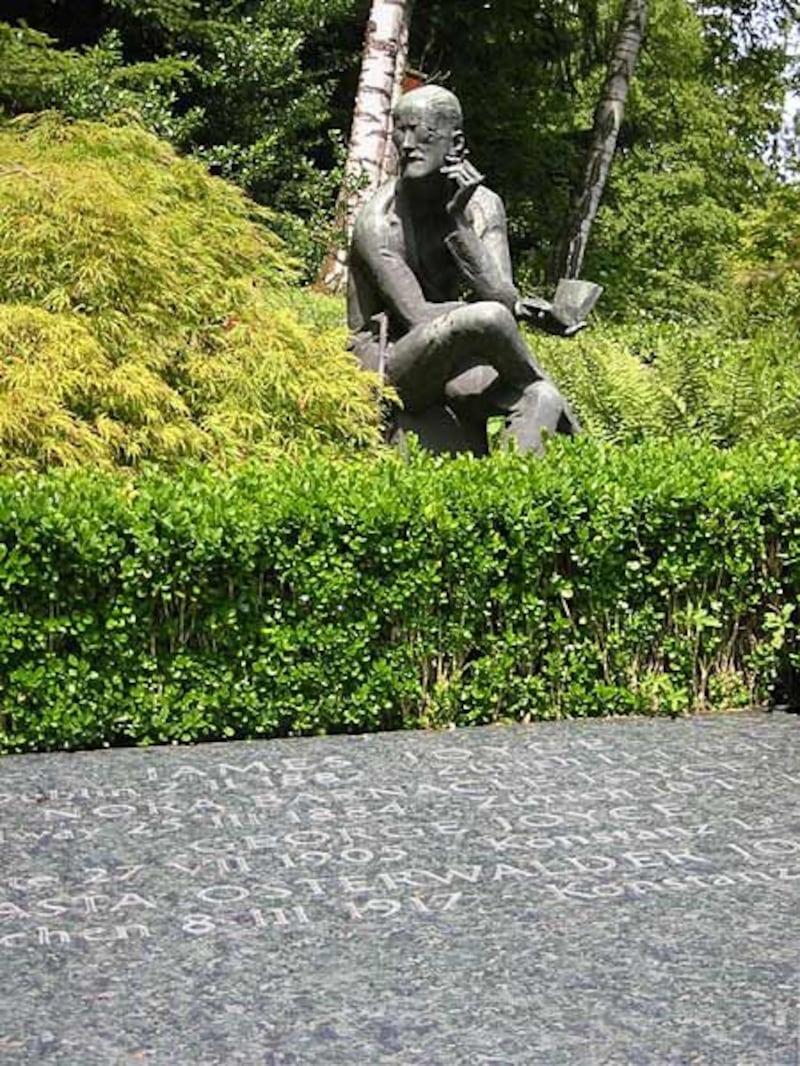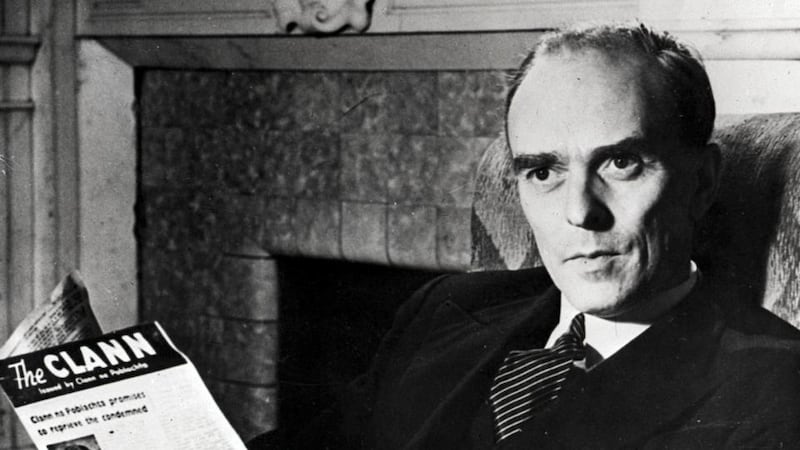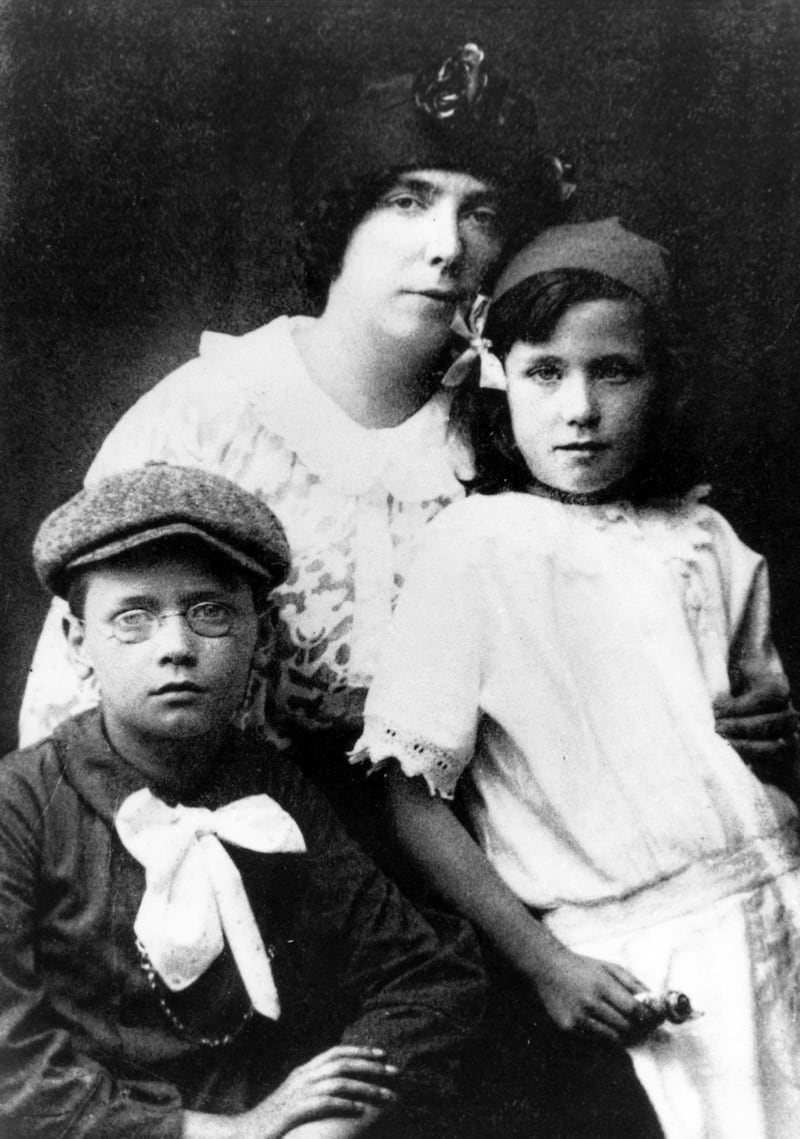When Frank Cremins, an Irish diplomat based in Berne, informed the department of external affairs in Dublin, where Éamon de Valera was minister, of James Joyce’s death, in Zurich, on January 13th, 1941, the department’s secretary, Joseph Walshe, responded, “Please wire details about Joyce’s death. If possible find out if he died a Catholic? Express sympathy with Mrs Joyce and explain inability to attend funeral.”
Joyce had lengthy contact with the Irish diplomats in Vichy France before receiving permission to enter neutral Switzerland; he arrived in Zurich with his family on December 17th, 1940. In Geneva he had been met by Seán Lester, the Irish diplomat who was secretary general of the League of Nations, and with whom Joyce spent a most friendly couple of hours.
On hearing of his sudden death, Lester sent a wreath and suggested that Cremins might attend the funeral, so that an Irish official would be present. The only diplomat there was, in fact, Lord Derwent, the British minister to Berne.
Joyce is buried in a beautiful little cemetery high on the Zuricherberg, but Mrs Joyce will never be happy until his body is brought back to Ireland
As usual with the Joyces there was a shortage of money, and friends had to pay for the funeral. The single grave at Fluntern Cemetery, numbered 1449, could accommodate only one coffin, and, according to Joyce’s biographer Gordon Bowker, “was meant to be temporary, until Nora” – the writer’s wife, Nora Barnacle – “could get him repatriated to Ireland, and she asked Harriet Weaver, Joyce’s patron and literary executor, to look into this. Weaver approached Count O’Kelly, the Irish chargé d’affaires in Paris, but the hostility to Joyce among the Catholic clergy, scholars and politicians was so intense that the request was refused.”
An American diplomat, scholar and bibliophile, John Jermain Slocum, whose James Joyce collection was acquired by Yale University in 1951, and whose annotated A Bibliography of James Joyce remains the standard Joyce bibliography, travelled to Europe in June 1948 "in search", he wrote, "of material by and about Joyce. In Zurich I saw his widow and son. Joyce is buried in a beautiful little cemetery high on the Zuricherberg, but Mrs Joyce will never be happy until his body is brought back to Ireland. She is a devout Catholic and feels that his body should rest in the land of his fathers."

WB Yeats and repatriation
When the body of WB Yeats was repatriated to Ireland, in September 1948, many thought that Joyce’s might follow. A variety of people began to take soundings. Among them was Slocum. Barnacle’s uncle James A Healy had been instrumental in Slocum’s meeting President Seán T O’Kelly in June. Slocum wrote a long, very carefully crafted letter to O’Kelly on November 25th, 1948, referring to Yeats’s recent repatriation and asking, “I wonder if it is unreasonable to think that James Joyce might be so honoured someday, and that in so honouring him, his country would be honouring itself. I realise that this proposal is presumptuous coming from a foreigner . . . If you were to express to me even a belief that such a return of his body to Ireland was possible, I think that I could start his friends in Zurich, in Paris, in London, in New York and even in Dublin, working on it wholeheartedly.”
Slocum referred to a possible "stumbling block – the Church which he ostensibly repudiated", arguing that "through his Jesuit education the Church was the fount of his inspiration, the mould in which his genius was formed". Slocum referred to the stand taken by L'Osservatore Romano, the Vatican newspaper, on Joyce's work on October 2nd, 1937, saying that "there is sufficient evidence that the Church itself recognises his contribution to the tradition of Catholic letters. In an article on Irish literature he was described objectively and dispassionately" in these terms.

Slocum wrote to Constantine Curran, a lifelong friend of Joyce, on March 11th, 1949: “I wrote a long and impassioned letter to Seán T O’Kelly several months ago proving conclusively that Joyce was a good Catholic and that his body should be brought home to Ireland because his widow would have it that way and because he was a large stone in the tower of Irish literature, or rather world literature. I have had no answer . . . If you should see him tell him to get after his secretary. I am waiting on an answer.”
Joyce had ridiculed Seán MacBride's parents, Maud Gonne and Maj John MacBride, during their divorce, four decades earlier, nicknaming them Joan of Arc and Pius X
Slocum's letter to O'Kelly was dealt with by Valentin Iremonger, private secretary to Seán MacBride, de Valera's successor as minister for external affairs. He spent several months challenging Slocum's reading of L'Osservatore Romano. He got the Irish ambassador to Italy, Michael MacWhite, to locate the article and interview its author. He wrote to Patrick Lynch, private secretary to Taoiseach John A Costello, that the article could hardly be construed as "evidence that the Church itself recognises Joyce's contribution to the tradition of Catholic letters". Slocum never got a reply to his letter, and a note made at the Department of the Taoiseach on July 15th, 1949, recorded that no action was to be taken.
MacBride had a close familial relationship with Yeats but had reason to be hostile to Joyce, who had ridiculed the minister’s parents, Maud Gonne and Maj John MacBride, during their divorce, four decades earlier, nicknaming them Joan of Arc and Pius X. When material from Joyce’s wartime flat in Paris was shown in the French and British capitals, MacBride declined to associate himself with the exhibitions.

Finnegans Wake
Harriet Weaver had intended to give the manuscript of Finnegans Wake to the National Library of Ireland. Barnacle opposed this, however, annoyed by recent reaction to her husband. MacBride wrote to her on July 12th, 1950: "I should like you to know that I personally and I am sure my colleagues in the Irish Government, as well as the Library itself, are deeply sensitive of how desirable it is from the nation's point of view that the manuscript of this great work should be deposited in your husband's native city. We are proud that James Joyce, one of the greatest Europeans of his time, was also a son of Ireland and we feel that the presence in the Library of the manuscript of [what] may be his greatest work would be a fitting commemoration of that fact."
The manuscript went, at Barnacle’s decision, to the British Museum. She died on April 10th, 1951, and because of the size of her husband’s grave had to be buried apart from him at Fluntern Cemetery. Later a new grave was opened, and it is where James, Nora, their son, Giorgio, and his wife are now buried.
Anthony J Jordan's latest work is James Joyce Unplugged.
Coverage in The Irish Times
The issue of James Joyce's repatriation seems to make little appearance in The Irish Times during the 1940s, though the letters pages did flare up following an Irishman's Diary on Saturday, October 22nd, 1949, which concerned a Joyce exhibition at La Hune Gallery, Paris, that year.
A friend of the writer had visited the exhibition, attended by "quite a little gathering of the Dublin clans." The article said Sean MacBride, then minster for external affairs, was quoted in a French newspaper as being a "great admirer of Ulysses".
The piece prompted a response from Maria Jolas, a close friend of the Joyces and co-founder of the literary journal transition. She was surprised to see MacBride's approval quoted in the article.
"However great an admirer of Ulysses Mr MacBride may be, there would appear to be an unwritten law which forbids official expression of this admiration," she wrote in a Letter to the Editor, published on November 22nd. Mr MacBride, she explained, had recently declined an offer to open the exhibition.
Mrs Jolas also recalled how a letter in 1948, written by the president of the James Joyce Society in New York to president Sean T O’Kelly regarding Joyce’s repatriation, had apparently “gone astray in the press of official correspondence”.
Visitors to the exhibition were probably unaware that to some of his countrymen, Joyce was “still in exile, still banned,” said Mrs Jolas. “The simple question that, as a personal friend of Joyce, I should like to ask, is: Why, and for how long?”

















